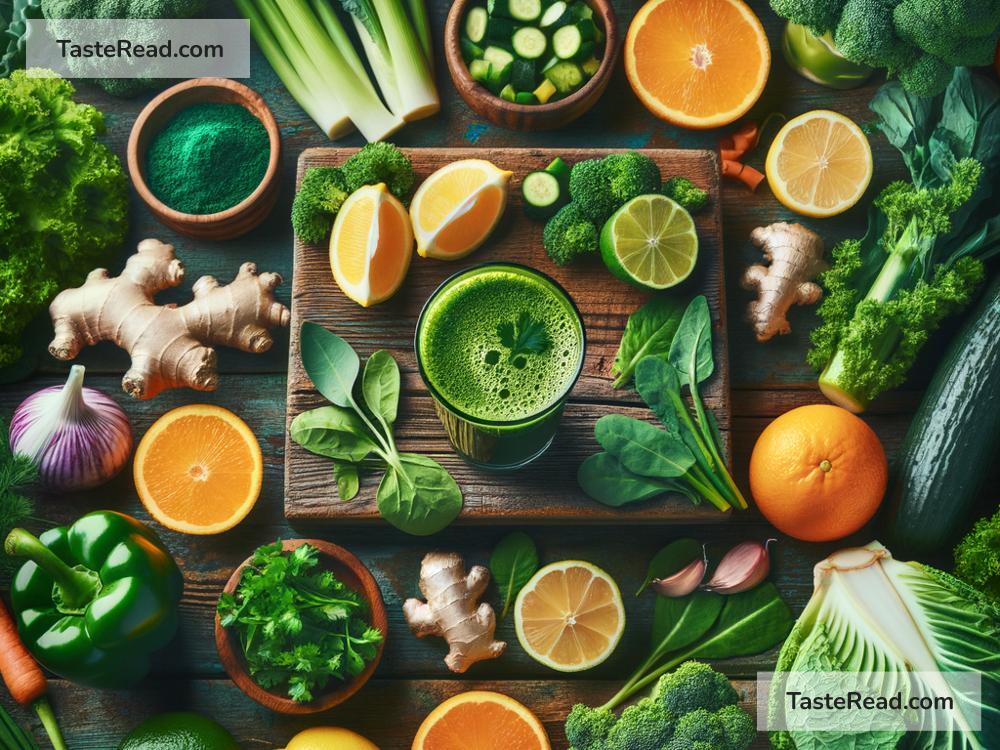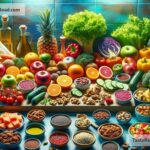Boost Your Body’s Detox Pathways Naturally: Foods to Help Cleanse and Revitalize
Did you know your body has its own amazing detox system? From your liver to your kidneys, skin, and digestive system, your body works hard to filter out toxins and keep you feeling great. But with modern challenges like processed foods, pollution, and stress, sometimes our detox pathways could use a little support.
Fortunately, you can give your detox system a helping hand by eating certain foods that support and enhance the process. In this blog, we’ll explore simple, delicious foods you can incorporate into your diet to improve your body’s natural cleansing mechanisms.
What Are Detox Pathways?
Think of detox pathways as highways in your body where toxins are processed and moved out. Key players in detoxification are your liver, kidneys, gut, lymph system, skin, and lungs. These systems work together to remove waste, balance chemicals, and maintain your overall health.
The liver is the star of the show, breaking down harmful substances into safer compounds for elimination. Your kidneys filter your blood and help remove waste through urine. Your intestines get rid of toxins via digestion, while your skin sweats out impurities. Keeping these detox pathways running smoothly is crucial for staying healthy.
Significance of the Right Foods
Many foods naturally contain nutrients that support detoxification. These act as fuel for the enzymes and processes responsible for breaking down toxins. By adding these foods to your diet, you can help reduce the burden on your system and boost your energy, immunity, and overall well-being.
Foods That Support Detoxification
Here’s a list of simple and accessible foods that you can enjoy to support your detox pathways:
1. Cruciferous Vegetables (Broccoli, Cauliflower, Kale, and Brussels Sprouts)
These vegetables are packed with compounds like sulforaphane and glucosinolates, which enhance liver detoxification. They promote the production of enzymes that help flush out toxins. Bonus: They’re rich in fiber, which aids digestion and keeps your gut healthy.
How to eat them: Roast broccoli, toss kale into salads, or include cauliflower in soups.
2. Lemon and Citrus Fruits
Citrus fruits, like lemons, oranges, and grapefruits, are excellent sources of vitamin C, a powerful antioxidant. They support liver function and help neutralize free radicals that damage your cells. Lemon water, in particular, is a simple and refreshing way to start your day and kickstart digestion.
How to eat them: Squeeze fresh lemon into water or add a tart twist to your salads with grapefruit chunks.
3. Leafy Greens (Spinach, Arugula, Swiss Chard)
Leafy greens contain chlorophyll, a compound that absorbs toxins and promotes gut health. Greens, such as spinach and arugula, are especially rich in magnesium, which helps your muscles and liver work efficiently during detox processes.
How to eat them: Blend them into smoothies, sauté them with garlic, or add them to wraps and sandwiches.
4. Garlic and Onions
Garlic is often called a superfood for detoxification because it contains sulfur compounds and antioxidants that activate liver enzymes. Onions complement garlic by boosting overall immune function while supporting kidney detox.
How to eat them: Use fresh garlic and onions as flavor enhancers in soups, stir-fries, or roasted vegetables.
5. Beets
Beets are highly praised for their ability to support liver health and flush toxins out of the blood. They contain betalains, which have anti-inflammatory and antioxidant properties. They’re also a great source of fiber to keep digestion smooth.
How to eat them: Grate them into salads, blend them into smoothies, or roast them for a side dish.
6. Turmeric
Turmeric is known for its active compound, curcumin, which has anti-inflammatory properties and supports liver detoxification. It boosts the production of glutathione, a key antioxidant within the liver.
How to eat it: Add turmeric to curries, soups, or as a golden latte (turmeric milk).
7. Ginger
Ginger aids digestion and promotes sweating, which is one way your skin gets rid of toxins. It also reduces inflammation and supports a healthy gut, which contributes to toxin elimination.
How to eat it: Brew ginger tea, add it to smoothies, or use it in savory dishes.
8. Berries (Blueberries, Strawberries, Raspberries)
Berries are loaded with antioxidants like anthocyanins, which protect your cells and support detoxification. They’re sweet, juicy, and easy to add to your daily meals.
How to eat them: Top yogurt or oatmeal with berries, snack on them fresh, or add them to salads.
9. Green Tea
Green tea is rich in catechins, a type of antioxidant that aids liver function and supports fat metabolism. It’s also hydrating, which is key for flushing out toxins through the kidneys.
How to drink it: Sip on freshly brewed green tea between meals or make iced green tea for a refreshing drink.
10. Water
Though it’s not technically a “food,” water is essential for detoxification. Staying hydrated helps your kidneys flush waste, promotes digestion, and keeps your skin healthy. Plain water or herbal teas are excellent choices.
How to consume it: Aim to drink 8–10 glasses of water daily and prioritize hydration throughout the day.
Conclusion
Supporting your body’s detox pathways doesn’t have to be complicated or expensive. By eating nutrient-rich foods like cruciferous vegetables, citrus fruits, garlic, and berries, you’re providing the building blocks your body needs to cleanse itself naturally. Combine this colorful variety of foods with regular hydration and healthy habits like exercise or adequate sleep, and you’ll feel more energized, refreshed, and ready to face the day.
Your body is already a detox expert; all you need to do is support it with wholesome nutrition and a balanced lifestyle. So, next time you plan your meals, think of them as fuel for a cleaner, happier you!


